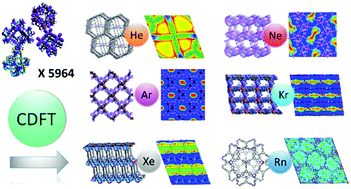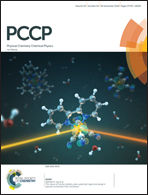Fast screening of porous materials for noble gas adsorption and separation: a classical density functional approach†
Abstract
The design and screening of porous materials for noble gas adsorption and separation are an important issue in the production and utilization of gases. The conventional method to do this is via molecular simulation. In this work, we introduced a classical density functional theory (CDFT) to replace molecular simulation because CDFT is more efficient. A molecular dynamics (MD)/CDFT combined method was proposed to consider the flexibility of the adsorbent. The theory was first examined by comparing it to reported experiments and simulations. Then, the theory was applied to determine the most favorable adsorbents for noble gas adsorption/separation from 4764 real adsorbents and 1200 hypothetical adsorbents. A series of favorable adsorbents was identified, and some of them seemed promising. The macroscopic adsorption isotherms and microscopic density profiles of the most favorable adsorbents were examined, and the adsorption mechanisms were revealed. The specific separation of Kr/Xe was examined, and two of the adsorbents showed higher adsorption efficiency than shown in previously reported data.



 Please wait while we load your content...
Please wait while we load your content...